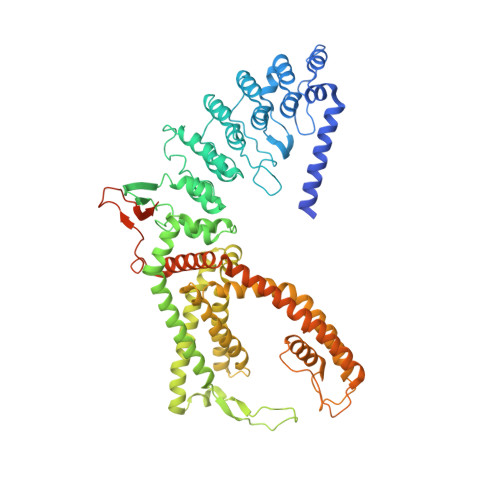Structural mechanisms of TRPV6 inhibition by ruthenium red and econazole.
Neuberger, A., Nadezhdin, K.D., Sobolevsky, A.I.(2021) Nat Commun 12: 6284-6284
- PubMed: 34725357
- DOI: https://doi.org/10.1038/s41467-021-26608-x
- Primary Citation of Related Structures:
7S88, 7S89, 7S8B, 7S8C - PubMed Abstract:
TRPV6 is a calcium-selective ion channel implicated in epithelial Ca 2+ uptake. TRPV6 inhibitors are needed for the treatment of a broad range of diseases associated with disturbed calcium homeostasis, including cancers. Here we combine cryo-EM, calcium imaging, and mutagenesis to explore molecular bases of human TRPV6 inhibition by the antifungal drug econazole and the universal ion channel blocker ruthenium red (RR). Econazole binds to an allosteric site at the channel's periphery, where it replaces a lipid. In contrast, RR inhibits TRPV6 by binding in the middle of the ion channel's selectivity filter and plugging its pore like a bottle cork. Despite different binding site locations, both inhibitors induce similar conformational changes in the channel resulting in closure of the gate formed by S6 helices bundle crossing. The uncovered molecular mechanisms of TRPV6 inhibition can guide the design of a new generation of clinically useful inhibitors.
Organizational Affiliation:
Department of Biochemistry and Molecular Biophysics, Columbia University, New York, NY, USA.


















